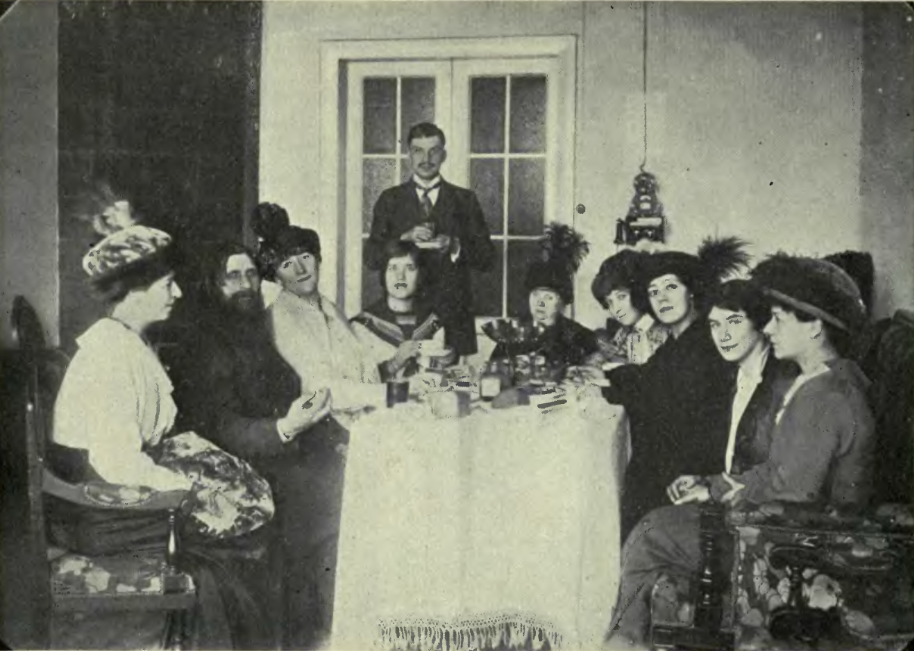
Rasputin and a group of his female followers, c. 1917.
• In the nineteenth century, clubs forcibly introduced animals to new habitats worldwide—often with poor results: “An early shipment of camels to Australia, to help travelers cross the arid interior, was met with tragedy when bad weather killed all but one (that camel, named Harry, lived a life of celebrity until he accidentally killed his owner, John Horrocks, by headbutting a gun while Horrocks was cleaning it). Ostriches similarly failed to thrive there. The founders of the British Acclimatization Society, who believed that the country’s growing food crisis could be solved by the introduction of exotic fish and big game, threw an enormous banquet every year from 1860 to 1865, featuring tables piled high with German boar, Syrian pig, East African eland, and Australian kangaroo. But they never successfully imported anything more impressive than the North American gray squirrel, which haunts them to this day.” (Atlas Obscura)
• Why does this medieval man have so many stab wounds? (Public Domain Review)
• Found among the rare books of Gabriel García Márquez: a handkerchief with the personal monogram of Fidel Castro. (Harry Ransom Center)
• The myths and realities of Rasputin and his era: “Early-twentieth-century St. Petersburg was a breeding ground for odd cults and mystical groups, theosophists and seers who claimed they could speak to the dead. After the Japanese debacle, the Russian elite was pessimistic about the future of the empire. Rapid modernization and industrialization had shaken the social structure entrenched over centuries, leaving both the peasantry and the new working class cut off from their religious and spiritual roots.” (Harper’s)
• What was Franz Kafka most afraid of? Venereal disease, it seems. (The Guardian)
• In Tudor England, it was fashionable to give gifts of exotic animals as pets: “When Lady Lisle gave Anne Boleyn a monkey in 1534, she wasn’t pleased. ‘As to touching your monkey,’ John Hussee wrote to Lisle the following year, ‘of a truth, madam, the queen loveth no such beasts nor can scarce abide the sight of them.’ What happened to the monkey isn’t clear. One hopes Anne didn’t do to it what Samuel Pepys did to his pet monkey in 1661: he battered it half to death in a fit of rage. Perhaps she palmed it off on a distant relative, as Pepys did with his pet eagle a few years later, writing in his diary that ‘we were heartily glad to be rid of her, she fouling our house mightily.’” (London Review of Books)